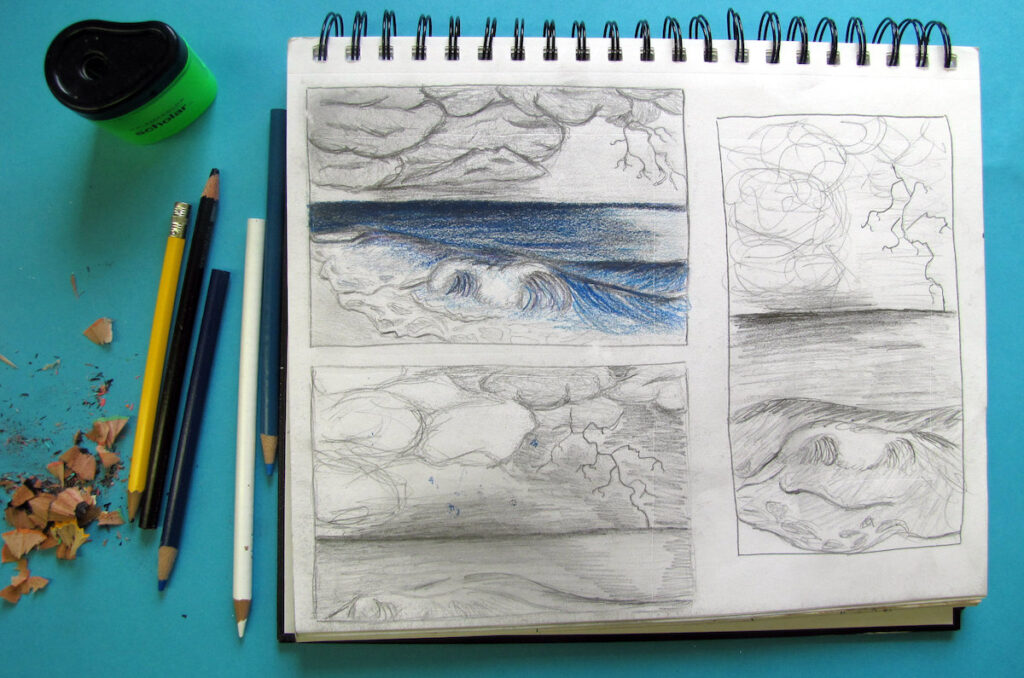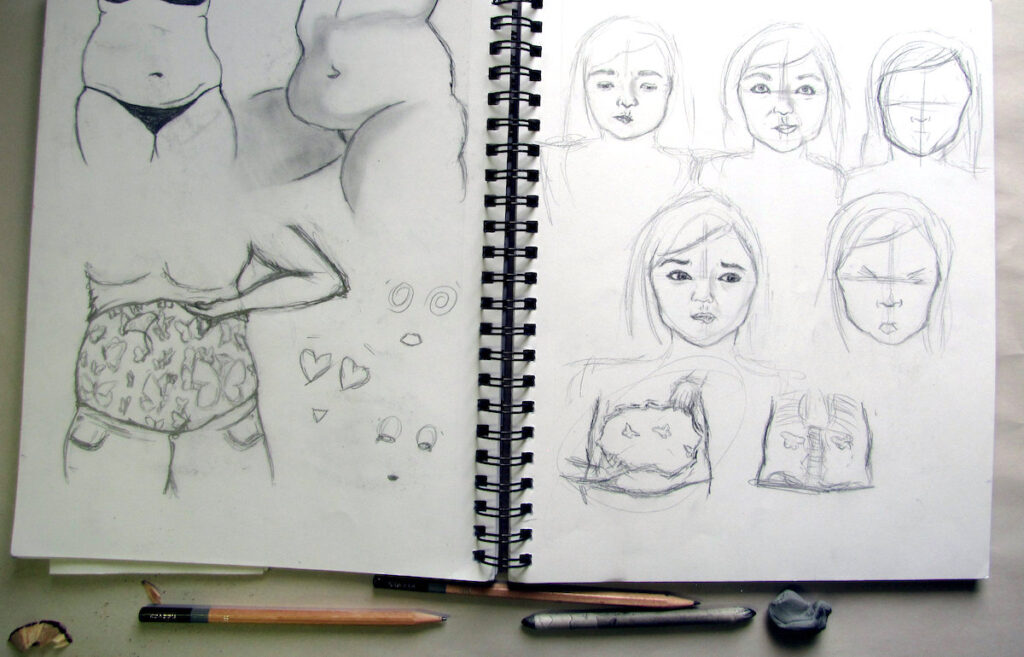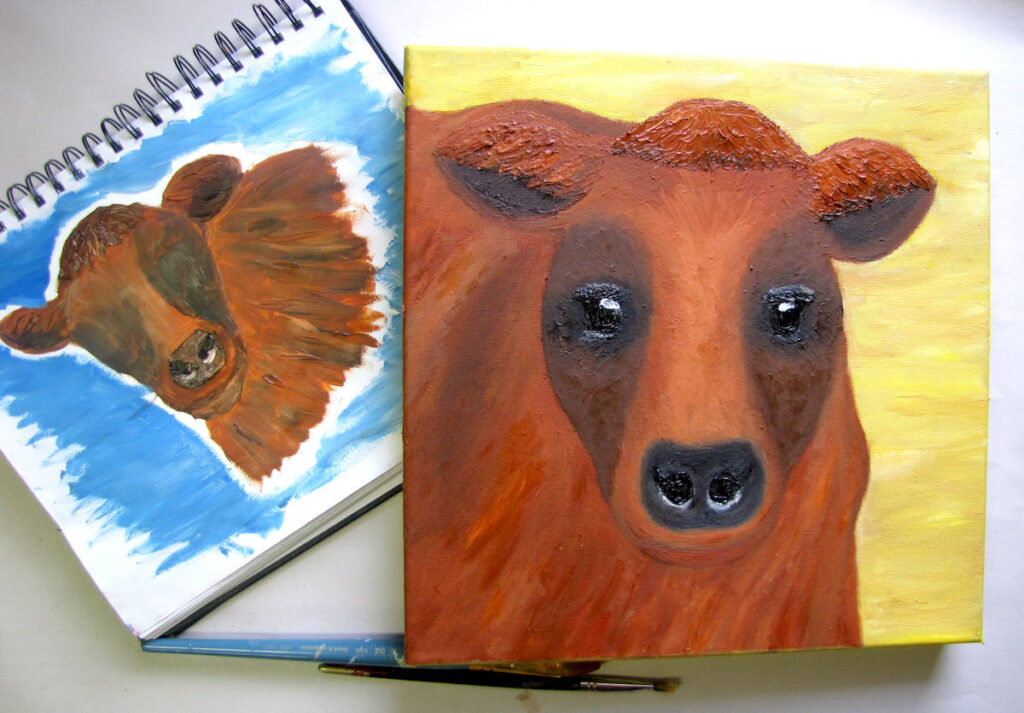There are things you just do in art class. For example, throughout their time in school, most kids will learn about Van Gogh, make a pinch pot, try wax resist, and learn one-point perspective.
Most kids will also do thumbnail sketches. It’s just one of those required things we have kids do. But why?
For me, it was because this was how I was taught to plan. I remember my teachers requiring a set number of thumbnails for every project, and I remember being annoyed. I responded like many students do; I did one thumbnail sketch of my intended composition and then did two more half-hearted ones to meet my teacher’s requirement.

Now, as a responsible adult and competent artist, you’d think I’d use thumbnail sketches every time I make art. Nope. I never use them. Sometimes I just think about my composition until I have a clear visual and start marking it in on my canvas. Or, depending on what I’m working on, I might just play around with how my photo reference is cropped and work from there. I still plan, I still think about composition. I just do it in a way that feels natural and makes sense to me.
Just like adult artists, students are individuals with different needs and creative process preferences.
This is why arbitrary requirements like a set number of thumbnail sketches make no sense. They become merely a hoop to jump through when we should be teaching students the value of meaningful planning. The focus becomes meeting the required number of sketches when it should be on collecting enough information to make a successful artwork.
What if instead of requiring a set number of thumbnails we started teaching planning as a problem that needs to be solved?
I do this in my classroom by using a framework I call the Design Thinking Process. Once students know how to use it, they are able to pick and choose planning, or “Design,” methods that meet their current needs. Planning is differentiated based on the needs and preferences of each student, and it’s seen as a valuable step in the creative process.

We absolutely should teach students the process of thumbnail sketches and the reason behind making them, but we can’t stop there.
Whatever your method, your goal should be to teach students an array of planning methods they are able to apply independently. Thumbnail sketches are great for discovering how to best arrange a composition, but there are so many other ways to start a piece of art.
Here are four examples.
- Ask students to experiment with media to see what best suits their ideas.
- Teach different brainstorming strategies.
- Walk students through group planning activities.
- Challenge students to make something without any preconceived plan and solve issues that arise during creation.
All of these are valid methods for planning work. Teaching them empowers students to make their own decisions about particular artistic goals.

When we think about the academic value of what we do, it’s important to consider rigor. Are the tasks we assign challenging enough? Do they lead to new knowledge and help construct meaning?
We must carefully examine how often we give less challenging tasks, like assigning all students the same number of thumbnail sketches. To make our instruction truly rigorous and relevant, we must teach our students the skills they need to work independently.
How do you use thumbnail sketches in your art room?
How else do you teach students to plan their work?
Magazine articles and podcasts are opinions of professional education contributors and do not necessarily represent the position of the Art of Education University (AOEU) or its academic offerings. Contributors use terms in the way they are most often talked about in the scope of their educational experiences.





